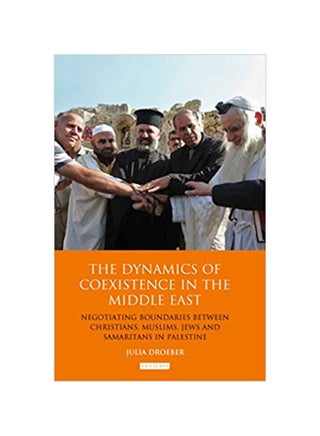Free & Easy Returns
Best Deals
| Publisher | I.B.Tauris and Co. Ltd. |
| ISBN 10 | 1780765274 |
| Book Format | Hardcover |
| Book Subtitle | Negotiating Boundaries Between Christians, Muslims, Jews And Samaritans In Palestine |
| Editorial Review | Due to its connections to the Abrahamic faiths, the "Holy Land" has often been explored within the context of inter-religious relations. Julia Droeber takes this approach as a starting point in her work on relations between religious communities in Nablus, Palestine. - This book achieves several objectives. It provides a comprehensive overview of religious minority communities in the setting of Nablus. Its discussion of the Samaritan community is particularly welcome given the absence of material on this group. While the strength of the anthropological study is the insight into the different discourses from and about the communities, the discussion is also related to theoretical debates regarding identity construction, group boundaries, and majority-minority interaction, thus making a significant contribution to literature on group relations in the region. It will be required reading for those working on minority communities in Israel-Palestine and also extremely helpful for those working on minorities in Muslim-majority environments elsewhere. - Whilst working within the discipline of anthropology, [this book] also has an interdisciplinary nature and [will] be of interest to those working in political science, contemporary religion and Middle Eastern Studies.' Dr Fiona McCallum, Lecturer in International Relations, University of St Andrews, Scotland |
| Publication Date | 11/26/2013 |
| ISBN 13 | 9781780765273 |
| Author | Julia Droeber |
| Language | English |
| Book Description | Palestine is often characterised, from afar, as being plagued by insurmountable difference and violent conflict along religious and ethnic lines. Julia Droeber looks beyond this, as she draws out the way in which sameness and difference is constructed and dealt with in the day to day relationships and practices of different religious communities in the West Bank town of Nablus. She follows the reality of coexistence and the constant negotiation of boundaries between Christians, Muslims and one of the last remaining Samaritan communities worldwide, and how these relationships are complicated by an occupier perceived as 'Jewish'. This is a sensitive and nuanced study of cultural and religious space in a much-contested region. It illustrates how differences are reconciled, accommodated and emphasised, while existing alongside a common sense of belonging. Droeber's findings resonate beyond the town of Nablus, and the West Bank, and into the broader fields of Middle East Studies, Anthropology, Comparative Religion and Peace and Conflict Resolution Studies. |
| About the Author | Julia Droeber is a social anthropologist at An-Najah University in Nablus, Palestine. She is the author of Dreaming of Change: Young Middle Class Women and Social Transformation in Jordan and has taught at universities in the UK, Germany, Kyrgyzstan, and Jordan. |
| Number of Pages | 256 |

